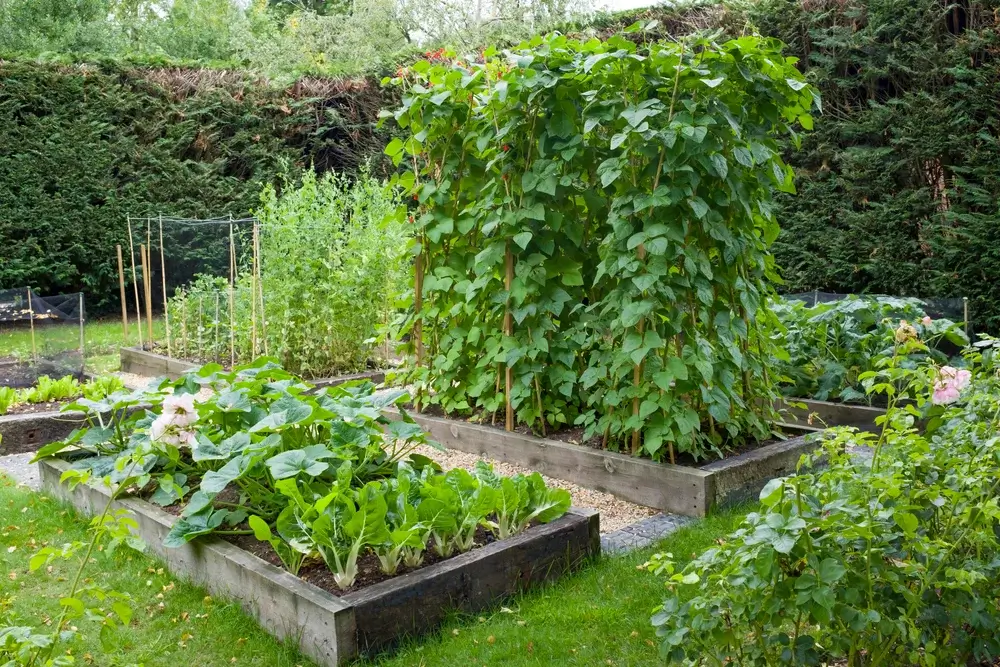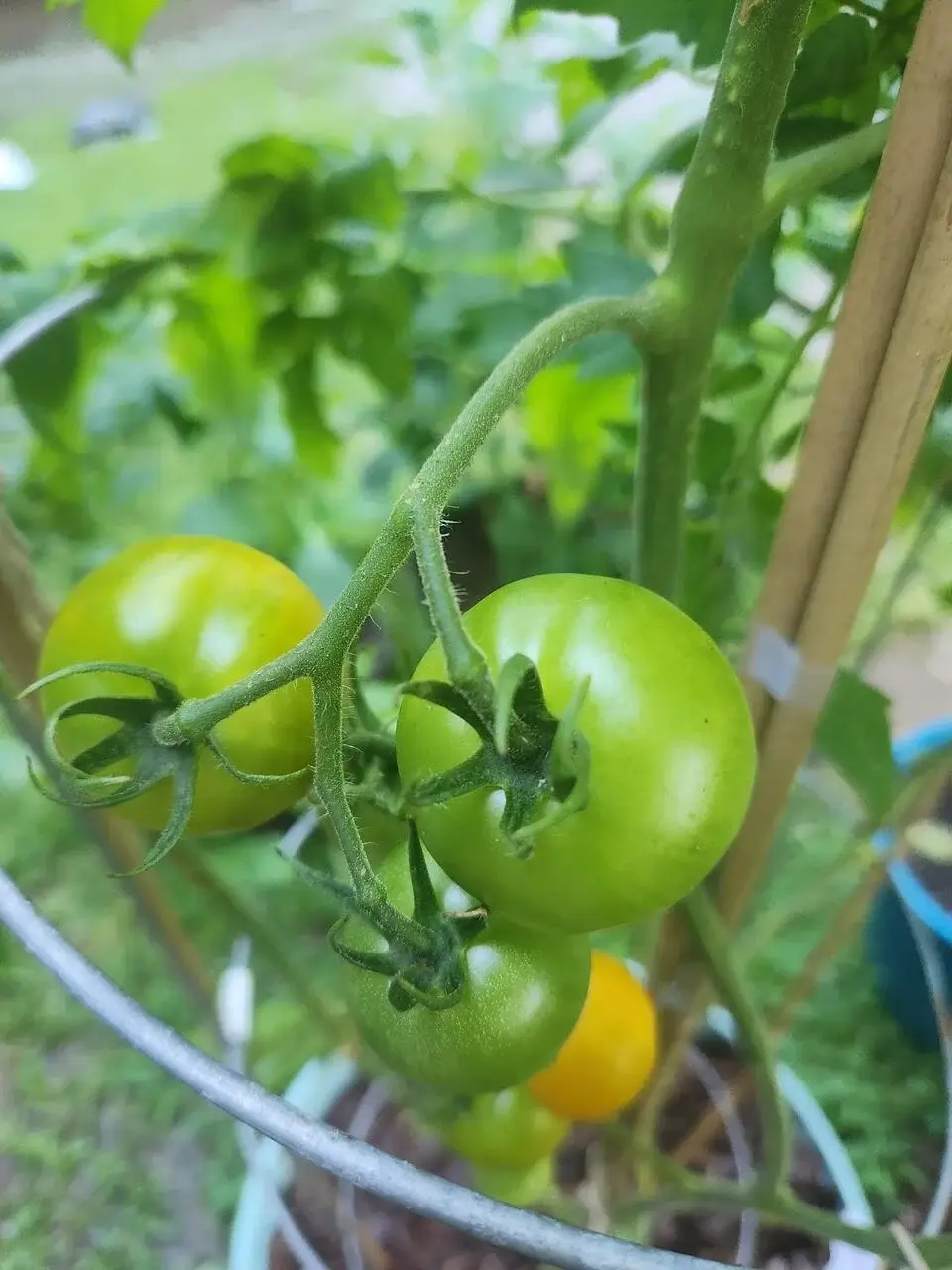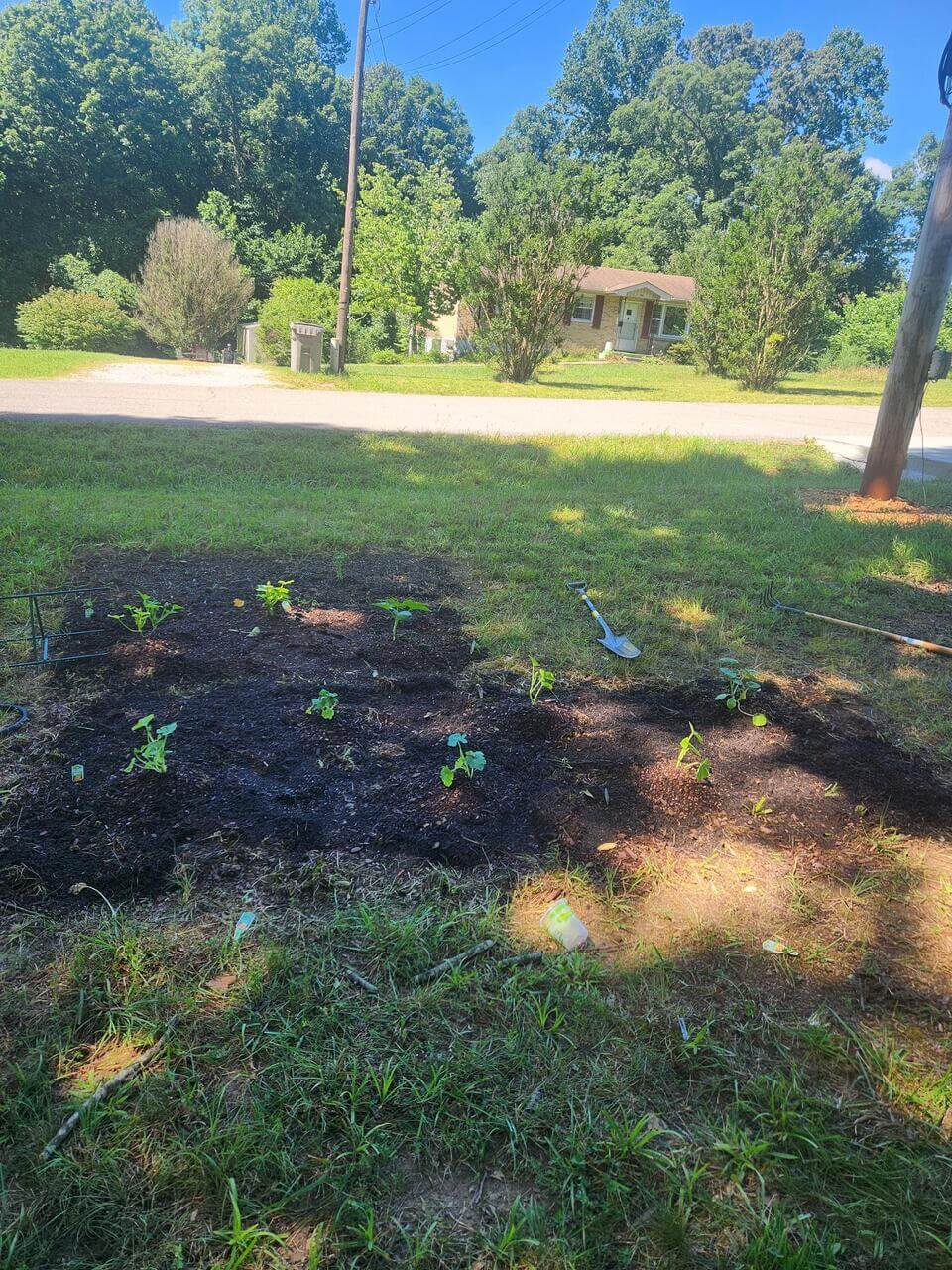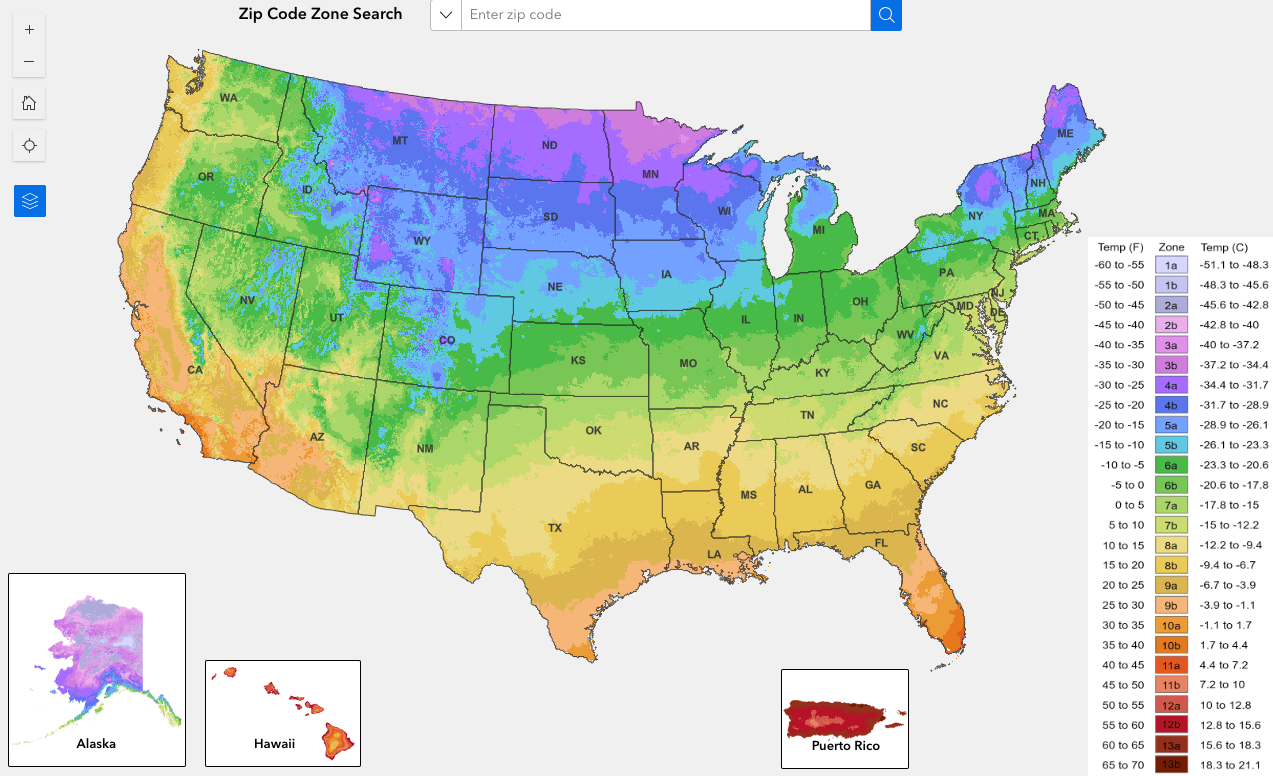Ten Tips to Improve Your Garden Next Season
A myriad of factors can determine what succeeds and what fails in your garden. The good news is that there are a lot of simple changes we can make to turn those failures into your best crop yet.
Ten Tips to Improve Your Garden Next Season
A myriad of factors can determine what succeeds and what fails in your garden. The good news is that there are a lot of simple changes we can make to turn those failures into your best crop yet.

Aspirational backyard garden. I'm not there yet. Photo from Shutterstock
Late summer is here. If you’re like me, you’re probably seeing some great successes and great failures in your garden.
I’ve been gardening at my home in the Nashville area (Zone 7b) for three years. I’ve learned a lot, but clearly not enough to be able to grow a decent Cherokee Purple tomato.
Here are 10 tips for a better garden sourced directly from my own garden fails.
This one sounds simple because it is. Water is crucial for a successful garden, but not every plant likes the same watering schedule. The bottom line is that you need a schedule and a plan for watering.
Factors like rainfall, humidity and temperature can change how you approach watering, so this skill does take some time to develop. If you’re unsure if your plants need water, using a simple moisture meter can help you see visually how moist your soil is. You don’t want your soil to be too moist, either, as this can also create an environment ripe for pests and disease.
Inconsistent watering can also leave your plants more vulnerable to disease and pests. Both disease and pests are opportunistic and love to take advantage of a plant that’s struggling. For example, my first attempt at growing big heirloom tomatoes was thwarted by blossom-end rot. I had initially attributed this to a lack of calcium in the soil, but the real culprit was inconsistent watering. Without consistent water, it’s difficult for plants to use the fertilizers you put into the soil. Check out this guide from Water Use It Wisely to get started.
2. Smart staking

When you think about staking your garden, most of us think about tomatoes. While tomatoes are going to be addressed here, there are many other crops you should be giving some extra support.
The first thing to think about with staking is how the plant grows. If the plant has a vining habit like cucumbers, squash and some varieties of beans, you’ll want to have supports ready before the plant needs support. Direct contact with the soil can make the plant more accessible to bugs and other pests, so keeping the vine tied up and tidy will keep your plant healthier and promotes its natural growing habit.
The best advice I have for staking is: don’t use a tomato cage for tomatoes. Tomato cages are often made of thin, flimsy wire that holds up circles of wire around the tomato plant. While the cage may work well for supporting branches, it’s not giving the tomato the support it needs around the main stalk. I’ve found that providing rigid support to the stalk is the most important part of keeping your tomatoes happy and upright.
A more robust version of a tomato cage like this one sold by Ultomato is a much better choice for an easy assembly cage that will actually provide solid support for your tomatoes. It also works great for other crops like pole beans. I used one of these for my pole beans and it’s doing fantastic.
3. Choose your varieties wisely
The biggest mistake I made this year was planting Sungold tomato starts, an indeterminate variety of tomato, in a small pot with merely a wire tomato cage for support. I didn’t even stake the thing.
Indeterminate tomatoes grow more like a vine compared to bushier determinate tomatoes. (You can learn more about the difference through this guide from Bonnie Plants). The difference is that indeterminates will keep growing and produce fruit consistently throughout the season compared to their determinate cousins, which set fruit all at once. Without proper support, they will become an unmanageable jungle of 10 to 15 foot vines. If I had known this, I could have created a better plan for my tomatoes informed by their growing habit.
Some varieties of crops are hybridized to protect against certain pests or diseases. If you’ve battled powdery mildew in your garden, choose a plant variety that’s resistant to powdery mildew.
You can find information about disease, deer and pest-resistant varieties of plants on the Cornell University College of Agriculture and Life Sciences website. If you’re new to disease resistant varieties, this is a great place to start learning.
4. Spread out

Make sure your plants have enough space to grow and thrive. The seedlings we transplant into the garden are so tiny, and it will initially feel weird to see so much space in the garden. Part of my Sungold tomato failure could also be blamed on my decision to put two plants in one 12” pot. It was too much for the pot, which is why it fell over, killing my tomatoes.
Be sure you check your seed packet or this chart from Mary’s Heirloom Seeds for accurate information about how much space to give your plants. And trust the information. Your garden is not an anomaly where plants can magically grow closer together.
5. Use a garden planner
There are lots of resources online for planning your garden. Timing is everything with growing annual plants. For my fall garden, I’ve been using Smart Gardener. What I like about this tool is the built-in reminders based on the time of year. Be sure you’re putting those plants in the soil at the right time.
It’s easy to think that early planting equals early yield and a longer growing season. However, research and years of experimentation has shown that’s simply not the case. Minding the time of year and your plant’s preferred growing season is key to a healthy crop.
6. Plan for pests

Prevention is better than the cure, especially when it comes to garden pests. Pests can shorten your harvest, cripple your plants’ production potential and double your garden chores.
Some common pests that set back my garden this summer were squash vine borers, tomato hornworms and birds. Other gardeners in my area have battled powdery mildew, potato beetles, aphids, and deer.
Constructing simple fencing can help keep rabbits away and planting good companion plants like marigolds can go a long way to keep unwanted critters away from your precious plants.
7. Organize, organize, organize
Having an organized and tidy space to keep your seeds, tools, fertilizers and other garden implements you’ll be using every day will make keeping up with your garden easier. If the space is chaotic, you’re going to be far less likely to spend time there and less likely to complete your garden chores.
If you need a hoe or a spade to prep your garden beds, but you can’t find either one, or they’re spread out throughout the garden, your chances of completing the task are going to be far lower. If the water hose is hard to access, you’re going to be less likely to follow your watering schedule.
Do yourself a favor and spend some time organizing your space to maximize both you and your garden’s potential.
Read More
Backyard and Urban Farming: How to Start—Whether You Own Land or Not
8. In the way, on the way
This advice came from one of my favorite local content creators, Anne of All Trades. The advice is simple: if you know you’re going to need a specific tool or implement to complete your daily garden tasks, put it in a spot where you can’t miss it.
Plan the shortest or most convenient route to your garden and put all your tools or things you will need along that path.
9. Know your growing zone

If you don’t know your growing zone, there’s an easy way to find out. Simply type in your ZIP code into the USDA Plant Hardiness interactive map and voila! Knowing your zone will help you know how long your growing season is and is a critical tool used by many gardeners to plan when they start and close their gardens.
The zones and growing seasons are mainly determined by your first and last frost date—the last frosty day of Spring when there’s morning frost and the first frosty day of Fall.
10. Follow other gardeners in your growing zone
Now that you know your USDA zone, search on your favorite social media site for other gardener content creators who live in the same zone. I’ve found a wealth of information through YouTube by searching “Zone 7 gardening.” There are many growers and content creators in Zone 7, where I live, so there is no shortage of gardeners to learn from. If you live in one of the more extreme zones, here is where following other creators can be especially useful.
Don’t be afraid to follow gardeners across the pond too. I’ve learned a lot from growers like GrowVeg and Gaz Oakley, who both live in the UK, but are in the same zone. Once you start searching, you may be surprised just how many gardeners are posting about their successes and failures.
One of my favorite resources for finding growers is Epic Gardening. While Kevin, the founder of Epic Gardening, lives in San Diego, California, (Zone 10), he’s taken care to showcase gardeners in other growing zones across America to ensure folks are getting well-rounded advice.
Looking forward to fall
It’s August, which is prime time for starting a fall garden in Tennessee. I’m taking all my lessons learned from this spring and summer and I’m applying that knowledge to my fall garden plans.
I’ve never grown a fall garden. While many gardeners pack up shop after the summer harvest is done, there is still plenty of time to grow crops that enjoy cooler weather. I just planted Danvers 126 carrots, Lacinato kale, Seven Top turnip greens, Purple-Top White Globe turnips, Catskill Brussels sprouts and Early Golden Acre cabbage. The tiny cotyledons just popped up out of the soil today, so I’ll be looking forward to chronicling my fall garden journey.
Learn More
How to Prepare Your Garden for Winter
Follow us
This work is licensed under a Creative Commons Attribution-NoDerivatives 4.0 International License.
Want to republish a Modern Farmer story?
We are happy for Modern Farmer stories to be shared, and encourage you to republish our articles for your audience. When doing so, we ask that you follow these guidelines:
Please credit us and our writers
For the author byline, please use “Author Name, Modern Farmer.” At the top of our stories, if on the web, please include this text and link: “This story was originally published by Modern Farmer.”
Please make sure to include a link back to either our home page or the article URL.
At the bottom of the story, please include the following text:
“Modern Farmer is a nonprofit initiative dedicated to raising awareness and catalyzing action at the intersection of food, agriculture, and society. Read more at <link>Modern Farmer</link>.”
Use our widget
We’d like to be able to track our stories, so we ask that if you republish our content, you do so using our widget (located on the left hand side of the article). The HTML code has a built-in tracker that tells us the data and domain where the story was published, as well as view counts.
Check the image requirements
It’s your responsibility to confirm you're licensed to republish images in our articles. Some images, such as those from commercial providers, don't allow their images to be republished without permission or payment. Copyright terms are generally listed in the image caption and attribution. You are welcome to omit our images or substitute with your own. Charts and interactive graphics follow the same rules.
Don’t change too much. Or, ask us first.
Articles must be republished in their entirety. It’s okay to change references to time (“today” to “yesterday”) or location (“Iowa City, IA” to “here”). But please keep everything else the same.
If you feel strongly that a more material edit needs to be made, get in touch with us at [email protected]. We’re happy to discuss it with the original author, but we must have prior approval for changes before publication.
Special cases
Extracts. You may run the first few lines or paragraphs of the article and then say: “Read the full article at Modern Farmer” with a link back to the original article.
Quotes. You may quote authors provided you include a link back to the article URL.
Translations. These require writer approval. To inquire about translation of a Modern Farmer article, contact us at [email protected]
Signed consent / copyright release forms. These are not required, provided you are following these guidelines.
Print. Articles can be republished in print under these same rules, with the exception that you do not need to include the links.
Tag us
When sharing the story on social media, please tag us using the following: - Twitter (@ModFarm) - Facebook (@ModernFarmerMedia) - Instagram (@modfarm)
Use our content respectfully
Modern Farmer is a nonprofit and as such we share our content for free and in good faith in order to reach new audiences. Respectfully,
No selling ads against our stories. It’s okay to put our stories on pages with ads.
Don’t republish our material wholesale, or automatically; you need to select stories to be republished individually.
You have no rights to sell, license, syndicate, or otherwise represent yourself as the authorized owner of our material to any third parties. This means that you cannot actively publish or submit our work for syndication to third party platforms or apps like Apple News or Google News. We understand that publishers cannot fully control when certain third parties automatically summarize or crawl content from publishers’ own sites.
Keep in touch
We want to hear from you if you love Modern Farmer content, have a collaboration idea, or anything else to share. As a nonprofit outlet, we work in service of our community and are always open to comments, feedback, and ideas. Contact us at [email protected].by Anna Beahm, Modern Farmer
August 27, 2024
Modern Farmer Weekly
Solutions Hub
Innovations, ideas and inspiration. Actionable solutions for a resilient food system.
ExploreExplore other topics
Share With Us
We want to hear from Modern Farmer readers who have thoughtful commentary, actionable solutions, or helpful ideas to share.
SubmitNecessary cookies are absolutely essential for the website to function properly. This category only includes cookies that ensures basic functionalities and security features of the website. These cookies do not store any personal information.
Any cookies that may not be particularly necessary for the website to function and are used specifically to collect user personal data via analytics, ads, other embedded contents are termed as non-necessary cookies.
a. the spade laying on the ground, never lay a tool on the ground, leave it standing up or leaning against a tree or bush. your back will thank you later.
b. number 8 is really smart.